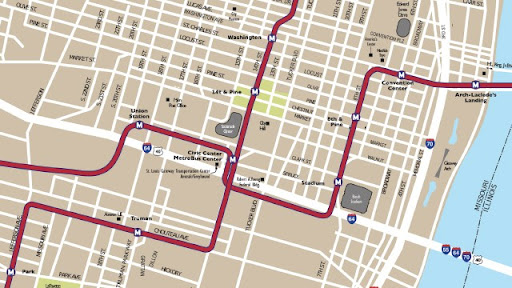Metro responded via Facebook to my recent post concerning the lack of bus service downtown. The Facebook note in its entirety:
Metro instituted the Downtown Trolley during service restoration to serve the destinations east of 14th street by bus. The Express routes continue to come into DT. This service package was created to address concerns that included the number of buses clogging DT streets, and customer inconvenience caused by the continual need to reroute due to closed streets or downtown events. The downtown leg was often the part that kept routes 10-15 min off schedule. These changes allowed Metro to improve headways for routes coming into downtown, and keep 10 min headways for #99.
We know that it is a change, and can be frustrating for some riders to transfer. But this was a compromise reached to make the best use of the resources available (including the built environment) while trying to improve on-time performance and keep up frequency. MetroLink has the ability to move on its own right-of-way and avoid traffic. However, we are very grateful for the level of customer feedback that we have come to build up and expect, and always welcome comments. Just please remember that we are a community service, and take great pride in bringing public transit, improving continuously, and making a difference to many in this region.
Overall, I believe this to be a good answer. While streets downtown are often surprisingly empty, signal timing and the multitude of events can often make driving through the area a frustrating experience. The rash of one way streets and dead-ends (9th St at Citygarden, Locust at Broadway, Busch Stadium and the Convention Center) only makes the problem worse. How can bus service be expected to efficiently serve such an environment in a dependable manner?
However, these problems are not unique to St. Louis. And the fact remains that downtown St. Louis has arguably the least all-day local bus service of any major city in the country.
Lastly, if Metro’s concerns are to be taken seriously, then the region should reconsider the the alignment for Northside-Southside MetroLink through downtown. If running buses through downtown is as slow and unreliable as Metro says it was (and is), then perhaps MetroLink should be restricted to 14th St, as well.


As the former E-W Gateway planner who helped manage the Northside-Southside Study, I know for a fact that Metro team members advocated staying on 14th Street. However, ridership models favored the 9th/10th couplet.Since then, I now believe that the line should run on 14th. The GSA was opposed to running on 10th and Clark anyway, as well as CMPD against Clark. Additionally, I strongly believe the line should now be built as a modern streetcar. That would slash the cost (estimated $900M in N-S study) by half to two-thirds. Signal priority and some semi-exclusive lanes could make it a "rapid streetcar" similar to ideas for Kansas City. I also think the line should stay on Natural Bridge (forget Goodfellow in N-S Study) to connect with the Red Line at UMSL, and likewise, stay on Jefferson/Broadway (forget I-55 in N-S Study) to connect with a future Blue Line at Bayless.
Alternatively, the line could follow Gravois from Jefferson to River Des Peres to connect with a future MetroSouth Blue Line extension.At the very least, an MOS "starter streetcar" should run from ONSL to Gravois via N.Florissant/14th/Chouteau/Jefferson.
Anonymous, if Metro team members advocated staying on 14th St, why was that alternative not officially studied in the Northside-Southside EIS?
^Ridership models at the time favored drive-access stations near interstates and walk-access stations within the CBD. Plus, there was a transfer penalty at Civic Center in travel time. Put simply, the project (LRT Build) had to compete with Metro's existing express services (No Build), as well as a Downtown Circulator (TSM). The Study was done back before the #99 even existed.You have to remember that the N-S study was completed back when TSUB was a critical measure of FTA's to calculate CE ratings for New Starts projects. And TSUB was largely biased towards new riders and travel time, something a slower line in the City cannabalizing bus ridership had difficulty maximizing.